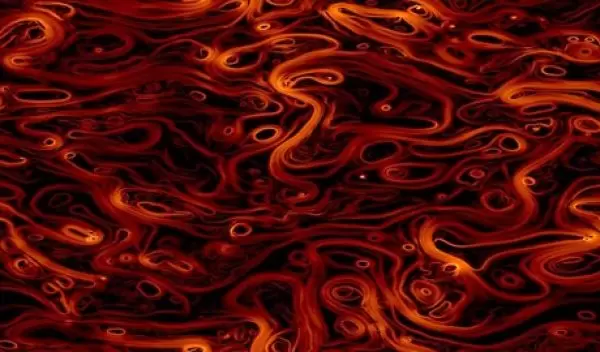
Laboratory experiments replicate volatile plasma at the center of galaxy clusters
A team of U.S. National Science Foundation grantee astronomers and astrophysicists based at the University of Rochester and other institutions examined the inner workings of heat conduction in galaxy clusters -- thousands of galaxies held together by gravity.
The matter in galaxy clusters is mostly tenuous ionized gas (plasma) with magnetic fields in a turbulent state. Turbulent plasma is incredibly hot; the new study provides an explanation. The team published the work in Science Advances.
The researchers created a replica of the plasma conditions expected to occur in galaxy clusters. The team used laser beams to vaporize plastic foils and generate turbulent and magnetized plasma, demonstrating the turbulent dynamo mechanism that results in magnetic field amplification in a lab environment for the first time.
"This work opens a new, experimental path to addressing a long-standing astrophysical question: Why are the cores of galaxy clusters so hot, despite the copious amounts of radiation they emit?" asked Petros Tzeferacos, a co-author of the study. "Accounting for this energy budget will help us understand how galaxy clusters evolve and how their large-scale structure is set up."
The experiments conducted at the National Ignition Facility and the associated simulations demonstrate how laboratory explorations can help the understanding of astrophysical systems, plasma physics, and the behavior of magnetized and turbulent plasma.


